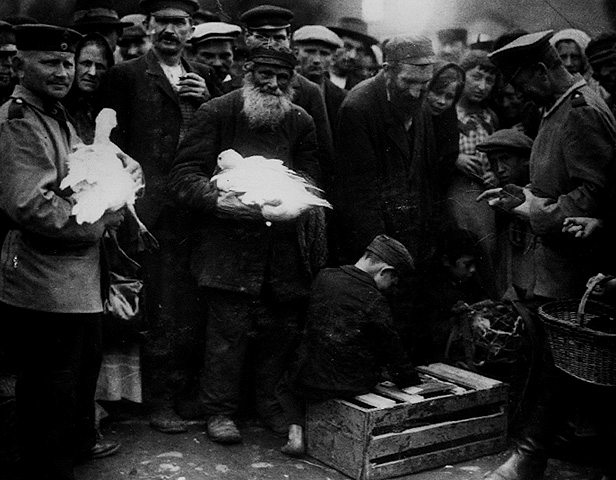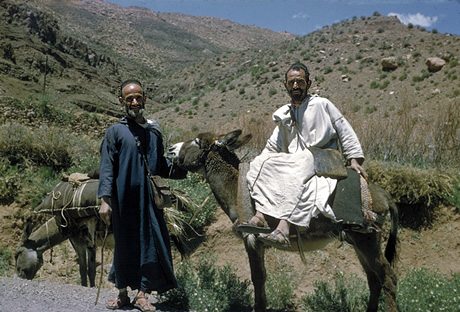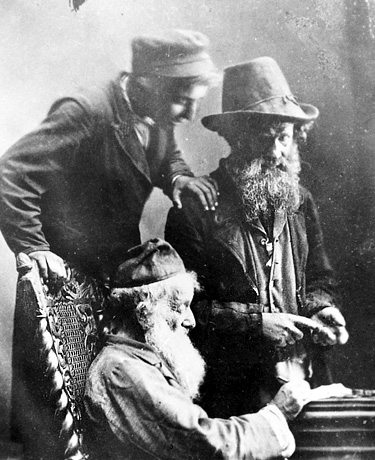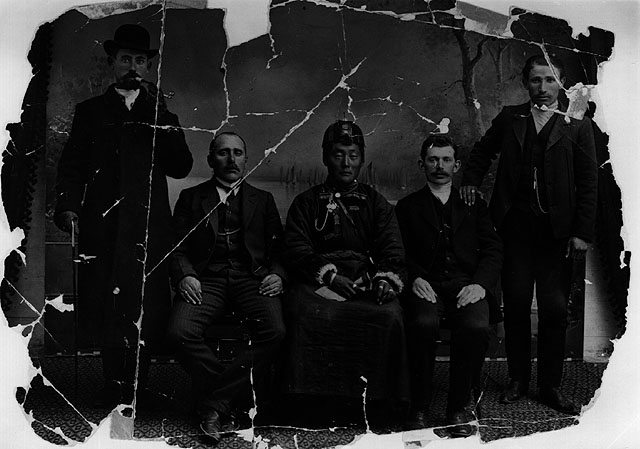On January 30, 1939 Adolf Hitler addressed a historical speech, in which he announced publicly for the first time his intention to exterminate the entire Jewish people. In his address he mentioned several times “the world Jewish capital” as the source of all humanity’s evil. Many researchers asserted that Hitler’s pathological hatred of the chosen people has derived from an imaginary paranoia from the allegedly economic magnitude of the Jews, who were in fact were a weak, scattered people without any political or sovereign rights.
A thousand years before Hitler projected his mental disturbances upon the Jews, there was an elite guild of Jewish merchants who held key positions and actually ruled the world’s economy; they spoke dozens of languages and had a worldwide trade network; determined to enhance their profit, they would go on any daring mission and travel any distance – those were the Radhanites.

Geo political circumstances in the 9th and 10th centuries gave the Radhanites a chance to head international economic elite. Following the expansion of the Abbasid Caliphate across Arab lands, the world was split: the Christian empire of Francia ruled the North West, whereas the Islamic empire ruled the south. Historian of the orient, Eliahu Ashtor, explained in a nut shell that they were “two hostile separated worlds”.
The insulation and the hostility between the two theocracies generated a critical change in commercial relations. Up until then, merchants could easily travel from the far east to the near east and Europe, then proceed to Spain and the Maghreb area. But the frequent wars in the Middle East disrupted the relations and trade routes and led in some cases to complete shutdown of the trade between the Islamic east and the Christian west.

This was the first harbinger of the rise of the Radhanite merchants, who spotted a business opportunity and were determined to use it. Ashtor writes: following the blocking of the Mediterranean sea for Christian traders, the Radhanite’s could take over. They could easily travel to and fro the two empires because they did not officially belong to neither of them; therefore they made perfect natural mediators. Historian Elinoar Bareket adds that at that period the Radhanites were neutral traders but also messengers who brought lots of income into many states, therefore had privileges from the French Carolingian dynasty and as well as from Muslim rulers. It appears that Jews thought of neutrality ages before the Swiss thought they invented it.
Where did the Radhanites come from and how they entered history? There are two explanations. Some historians claim that they came from Western Europe in the Rhine estuary, and that their name suggests Persian origin, meaning “way” or “path”. Others say that their origin is an ancient region of Radhan in modern days southern Iraq.

The first to ever record the story of the Radhanites was the Arab geographer Ibn Khordadbeh, who left a detailed description of their journeys in China, India, Persia, Francia and then in Spain and Morocco, back through the Maghreb lands and Egypt towards the Red Sea, and back to the east. They exported rare silk, sable and mongoose furs, all sorts of leather and pricey swords, which the people of the east admired in particular. On the opposite route they brought luxuries for the western rich and famous, such as nobles, kings and church seniors: exotic fruits, furs, corals, spices, healing ointments, and musk perfume, extracted from a deer’s glands. These long journeys were dangerous and costly, and required means, which only the Radhanites had as they were very wealthy. They were in fact a small exclusive guild with a firm financial safety net.
One famous periodic story tells about a Radhanite merchant called Isaac, who served as an interpreter in a delegation sent by Charles the Great to the Abbasid Caliph Harun al-Rashid, whose legendary character is the protagonist of the famous anthology “Arabian Nights”. As the delegation arrived at Baghdad, the Caliph held a festive reception and offered Charles the Great a rare present that was never seen in Francia, to express his respect – an enormous white elephant called Abu Abas. Isaac was ordered to take care of the elephant during the long trip back to the west. Before they took off he received specific instructions as to how to handle the rare beast and during the journey he was emotionally attached to the huge white good tempered animal. As they entered the doorway of the Aachen palace, the elephant attracted exciting responses; thousands of peasants heard about the giant beast and how it ate from his caretaker’s hand, and they came from far away to see the wonder.

The Radhanites not only traded in prestigious goods and set on diplomatic missions; they also traded in very profitable commodities, yet not as humane, such as slaves. Since in Francia is was forbidden for Jews to buy or sell Christian slaves, they traded in white pagan slaves from Slavic lands, that had high demand among the east and among the caliphs in Cordoba who just could resist them. Female white slaves were also much desired. In Spain they were even taught how to sing and play and given certain amount of education so that they can entertain their owners.
As a nation whose foundation story is about breaking free from slavery, it is appalling to picture a Jewish slave trader taking chained slaves to the fair, where they are going to be brutally castrated for money. On the other hand, the traders in question were a very small group, who certainly did not represent the entire Jewish people. But let us keep in mind, that under certain social conditions, generalizations result in paranoia, sometimes strong enough to last for a thousand years, and plant the seed of genocide in the mind of a psychopath wearing a mustache, not far from the palace where Isaac fed his pet, Abu Abas, the white elephant.